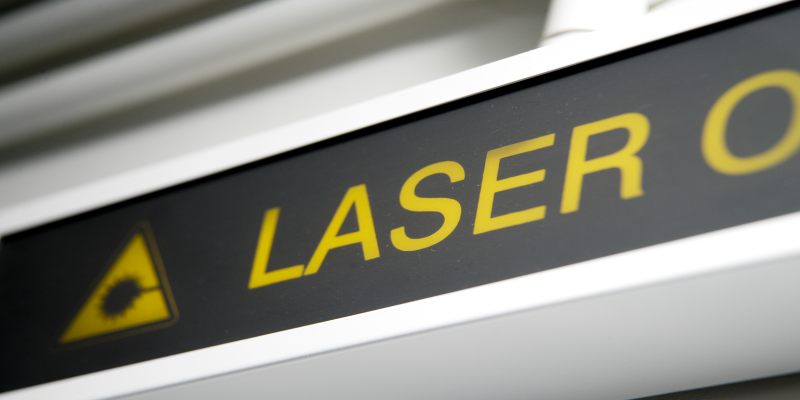Laser Safety
Laser Classification

Lasers are used in the University for many different research and teaching applications. They can also be found in commonly used equipment such as laser printers, DVD player, optical disc drives, laser pointers, etc.
At the University, we control all work with class 3B or 4 lasers (and occasionally with other laser classes) by following a Laser Management Protocol. For details, see the Standard, Guidance, Forms etc under the ‘Downloads’ link at the bottom of this webpage).
Laser classification
-
Lasers are classified using an international standard (IEC 60825) according to their potential for causing adverse health effects.
-
The classes are: 1, 1C, 1M, 2, 2M, 3R, 3B, 4. The risk - and therefore classification - is dependent on the laser’s wavelength and power (for pulsed lasers, also the pulse frequency and energy). The higher the class number, the higher the risk of harm to eyes and skin.
-
Class 3B and 4 lasers present the highest risk, where even reflected beams can cause eye injuries.
-
Laser products (equipment containing lasers – e.g. DVD player) classification depends on the risk of accessing a laser beam – e.g. laser printers or DVD drives can have embedded class 3B lasers but are built so that a user has no access to the laser; they are therefore classified as class 1 laser products.
-
Lasers and laser products in classes other than 3B and 4 are of lower risk and do not require specific control measures - so long as they are used under normal operational conditions and without any modification.
-
However if class 3B or 4 lasers inside lower class products are accessed for any reason (including servicing and maintenance) then this work will also be controlled by the Laser Management Protocol and the control measures need to be followed.
For help and support around lasers, please contact your Laser Safety Officer or the Laser Safety Manager. For details of these, see the Contact us webpage.
